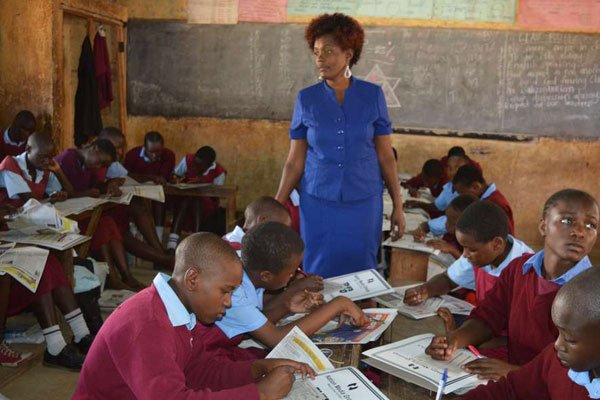
 Kenya has continued to be prioritised by donors in funding of the education sector as compared to other countries in the region, states a report published by UNESCO’s Global Education Monitoring (GEM).
Kenya has continued to be prioritised by donors in funding of the education sector as compared to other countries in the region, states a report published by UNESCO’s Global Education Monitoring (GEM).
The report indicates that this is contrary to global trends, which indicate that amount of aid allocated to education has been falling for six years in a row.
“Total aid to education in Kenya has been increasing on average since 2010, with one blip in 2014, when aid fell from Sh10.2 billion to Sh8.9 billion,” states the report.
It adds that in 2015, it rose again to Sh9.9 billion, more than double what was being received in 2010 with only six other countries in the region receiving more as a total amount of aid to education in 2015.
Kenya allocates over Sh300 billion to the education sector annually.
“Aid remains far short of what is needed to achieve Sustainable Development Goal 4, putting our commitments at risk,” said Irina Bokova, Director-General of UNESCO.
He went on: “Aid would need to be multiplied by at least six to achieve our common education goals and must go to countries most in need. Yet, we see that donors to education are shifting their attention away from the poorest countries.”
The United States and the United Kingdom remain the two largest donors to basic education, but reduced their allocations by 1 1per cent and nine per cent respectively between 2014 and 2015.
The report indicate that Norway and Germany, meanwhile, increased their allocations to basic education by 50 per cent and 34 per cent respectively.
The report adds that aid is not being allocated according to need.
“Sub-Saharan Africa, home to over half of the world’s out-of-school children now receives less than half the aid to basic education it obtained in 2002.
This amounts to 26 per cent of total aid to basic education, barely more than the 22 per cent allocated to Northern Africa and Western Asia, where nine per cent of children are out-of-school.
In contrast to trends in bilateral aid to education, the Global Partnership for Education (GPE), allocated 77 per cent of its disbursements to sub-Saharan Africa and 60 per cent to countries affected by instability and conflict.
The report provides country-specific examples of donors’ biased resource allocation. It demonstrates that aid is not allocated according to out-of-school rates so as to meet the cost of achieving universal education in each country concerned.
Some of the donor-funded programmes in Kenya includes Sh5 billion Tusome project that seeks to improve early grade reading for Standard One and Two pupils across the country and which is funded by US and UK governments.
GPE is also supporting Kenya Primary Education Development project at a tune of Sh8.8 billion and seeks to improve early grade mathematics competencies among others.
The Ministry of education is also set to train teachers in 4,000 schools which have recorded low performance over years across the country with funding from Global Partnership under the supervision of the World Bank.
[“Source-ndtv”]




